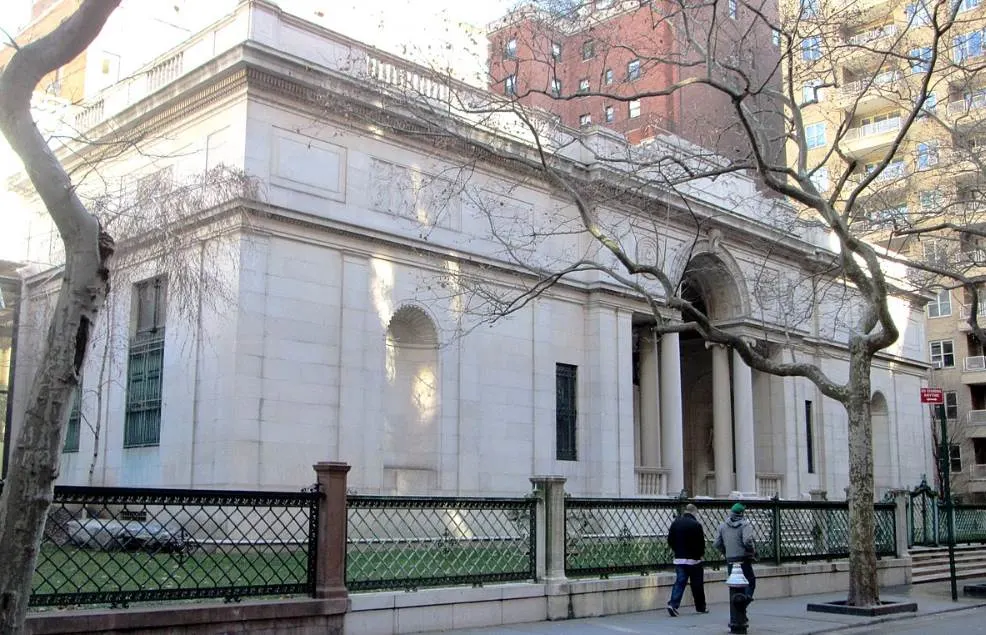If you visit one of the most stunning libraries in the United States, you also have the chance to admire one of the most amazing Romanesque artworks in the world.
Considered to be an absolute masterpiece of Medieval art, this relatively small shrine has a history that goes back to the 12th century.
Let’s take a closer look at some of the most interesting facts about the Stavelot Triptych, an incredible example of art produced during the Middle Ages.
1. It was completed at the height of Mosan Art
The Stavelot Triptych was named after the location it was produced, Stevelot Abbey in the town of the same name.
This small town in modern-day Belgium was once the center of an art movement known today as Mosan Art. This is a reference to the Meuse Valley where it emerged.
Mosan Art was produced during the Middle Ages between the 11th and 13th centuries. Apart from distinctive Romanesque architecture, many other types of art were produced here as well.
This includes stone carving, metalwork, enameling, and manuscript illumination. Especially the metalwork was a specialty of Mosan artists and was of the highest quality.
This remarkable work of art is a great example of the skills of goldsmiths and metalworkers in the 12th century as it was completed around 1156.

2. It’s a portable altar that features both gold and enamel
This Romanesque masterpiece consists of a middle section that is adjoined by two wings. These can be shut to protect the middle section.

The entire triptych is decorated with precious gems and is covered in enamel and gold. The style used to decorate this piece is referred to as the champlevé technique.
Mosan artists excelled in this as it allowed them to produce delicate little works of art that are highly ornamented, something exemplified by the Stavelot triptych.
It was quite a complicated process in which they carved elements out of the metal surface and filled it with vitreous enamel., also known as “porcelain enamel.” Once filled, they fired it up to merge both elements.
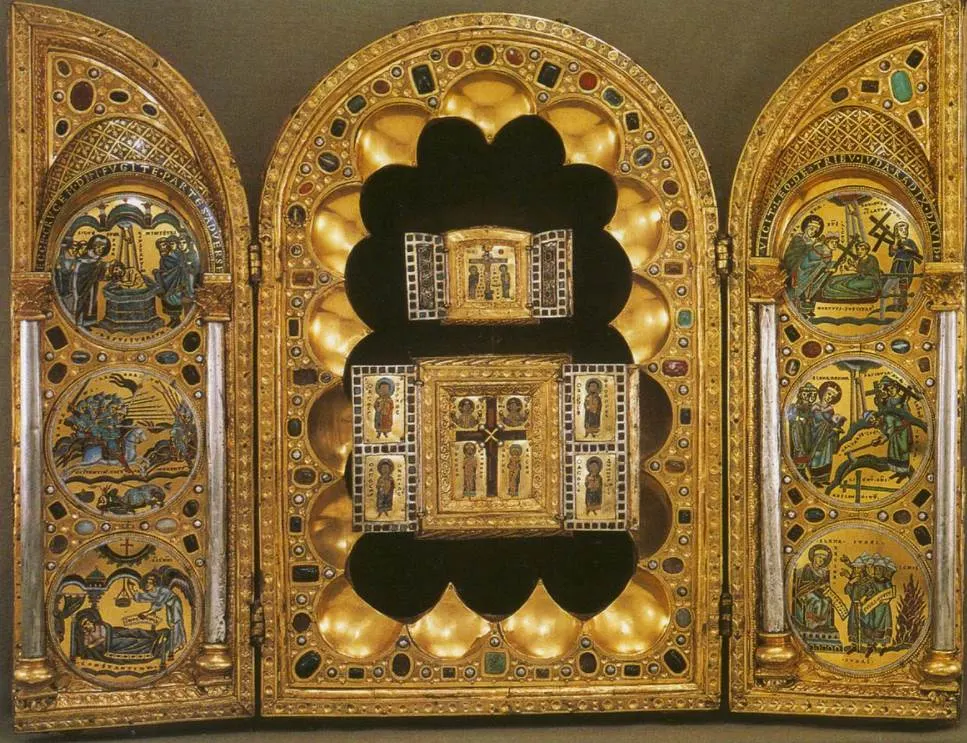
3. The middle section features two smaller triptychs that predate the other parts
One of the most interesting facts about the Stavelot Triptych is that the inner section features two smaller triptychs that were produced using an ancient technique called “cloisonné.”
This means that it was produced by integrating metal strips to hold together other elements such as precious gems instead of merging them into the metalwork.
This means that the inner triptychs are Byzantine artworks and predate the other sections by many decades.

4. There’s a popular theory as to why the triptych was commissioned
We don’t know who completed the main triptych and the two smaller triptychs held in the middle section. We do have a generally accepted theory as to how the Stavelot Triptych came about.
Stavelot Abbey was home to a large Benedictine Monastery that ruled the Principality of Stavelot-Malmedy. Back in the day, Europe was an enormous collection of small states that formed part of the Holy Roman Empire.
As a representative of this principality, Prince-Abbot Wibald (1098–1158) was sent on a diplomatic to Constantinople, the capital of the Byzantine Empire, by Holy Roman Emperor Frederick Barbarossa in 1154.
It’s believed that he received the two small triptychs as a diplomatic gift during this mission from Byzantine Emperor Manuel I Comnenus (1118-1180).
The triptych was commissioned and completed by members of the workshop of Stavelot Abbey upon his return.
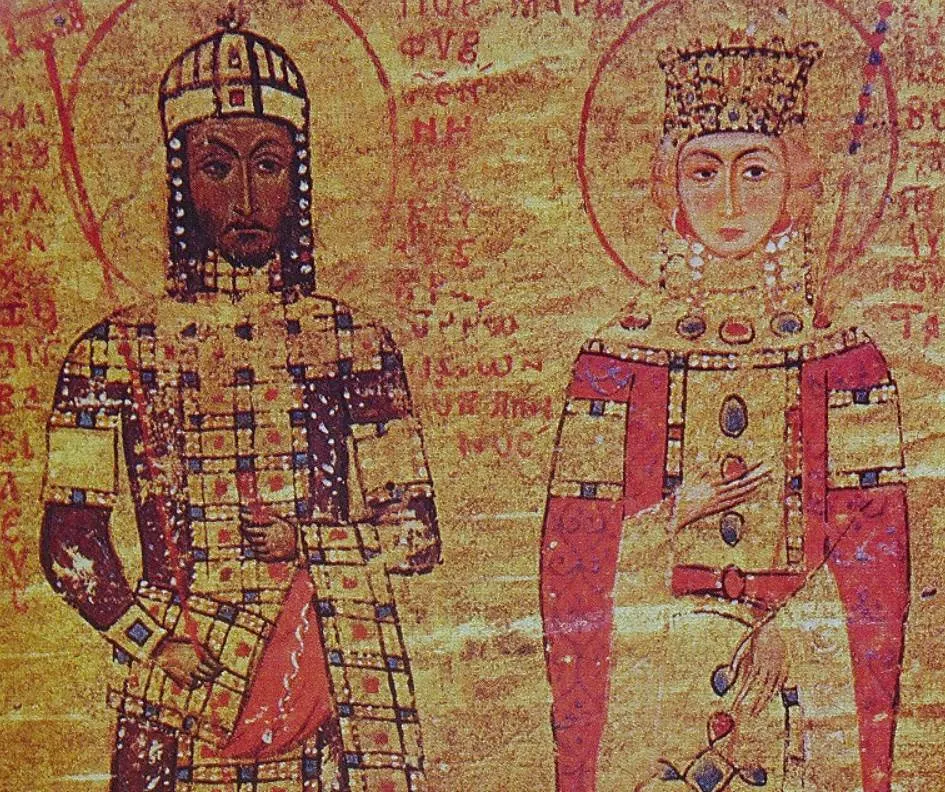
5. The depicted figures tell the story of Constantine’s conversion to Christianity
What makes this artwork so remarkable is that it depicts the story of Roman Emperor Constantine the Great.
He was the first Roman Emperor to convert to Christianity and this triptych tells the story of why this happened.
The lower medallion on the left depicts Constantine I while he is having a dream before the Battle of the Milvian Bridge. according to medieval legend, he was visited by an angel.
This angel told him “that he would be victorious when the “In Hoc Signo Vinces.” This translates to “Under this sign, you will be victorious.”
Above we can see Constantine conquering his enemy Maxentius which allowed him to take control of the Roman Empire.
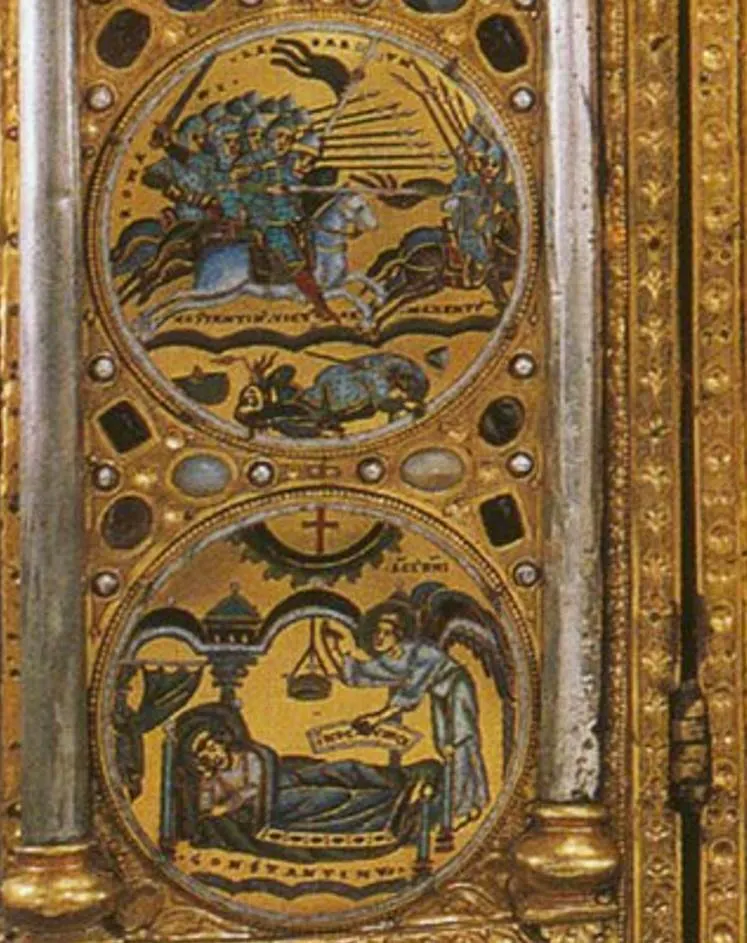
6. The lower triptych is believed to hold wood from the True Cross
The presumed diplomatic gifts from the ruler of the Eastern Roman Empire were nice, but one wonders why such a magnificent triptych was commissioned to hold it.
The reason is that the largest of the two central triptychs holds slivers of wood which are believed to be pieces of the True Cross. Yes, this was the actual cross upon which Jesus was crucified.
The medallions on the right tell the story of the True Cross being dug up on Mount Calvary in Jerusalem where the crucifixion took place.
Were these pieces of wood actually part of the True Cross? Most probably not, but it’s accepted by Catholic and Orthodox Churches.
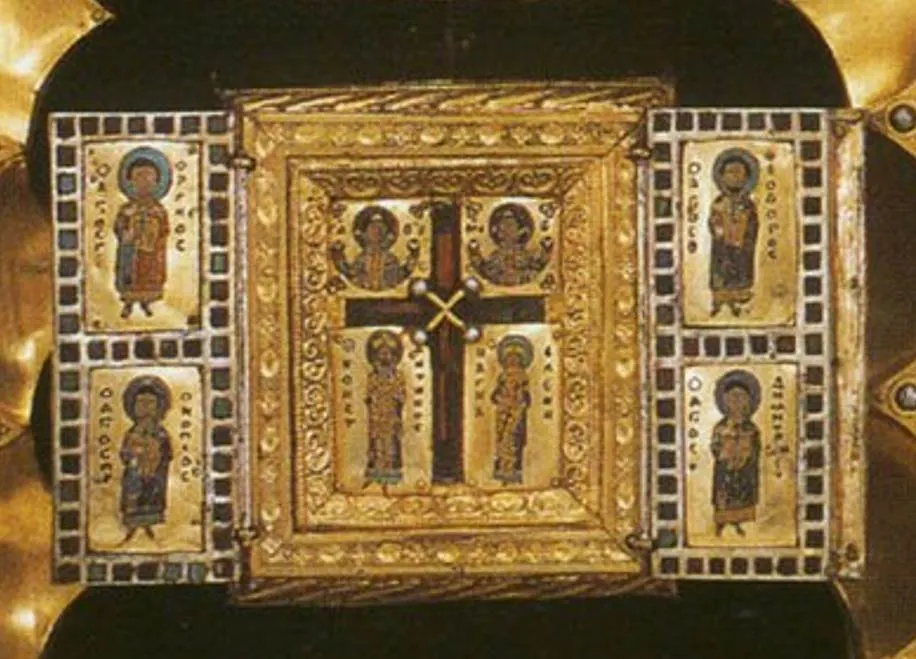
7. How big is the Stavelot Triptych?
The beauty of this remarkable work of art lies in the details. The figures, the precious gems, the magnificent decorations, and the narrative inside the medallions make this an exceptional work of art.
It’s far from being the largest Mosan artwork as the Stavelot Triptych has dimensions of 48 x 66 centimeters (19 x 26 inches) with the wings open.
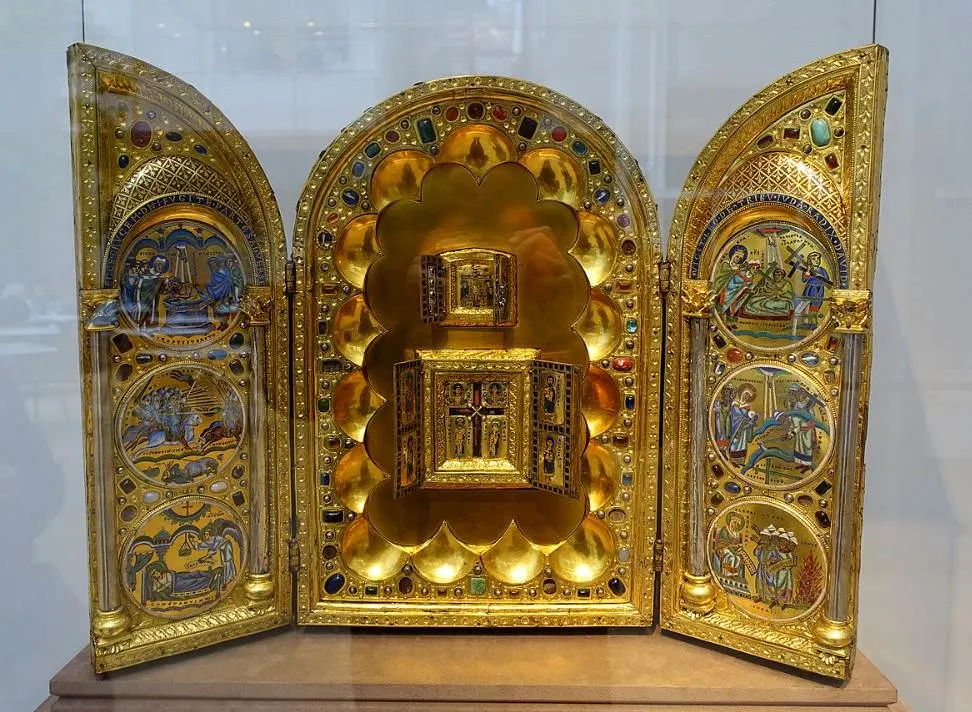
8. Where is this Romanesque artwork located today?
The triptych remained at Stavelot Abbey for many centuries and was only moved during the French Revolution in the late 18th century.
Célestin Thys was the final Prince-Abbot and he brought the triptych to Germany during the Napoleonic Wars in the early 19th century.
It remained there until 1910, the year it was acquired by a London art dealer who subsequently sold it to American investment banker J. P. Morgan.
Today, you can admire this piece at the Morgan Library & Museum which is located in the Murray Hill neighborhood of Manhatten, New York City.
